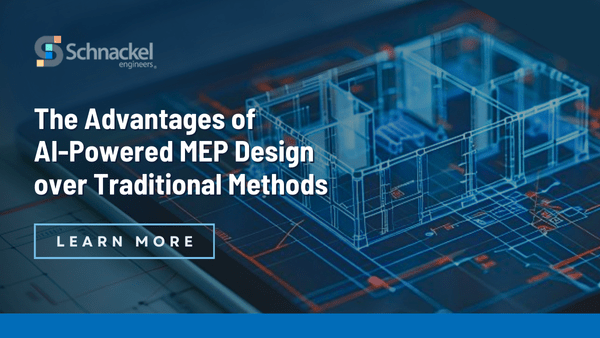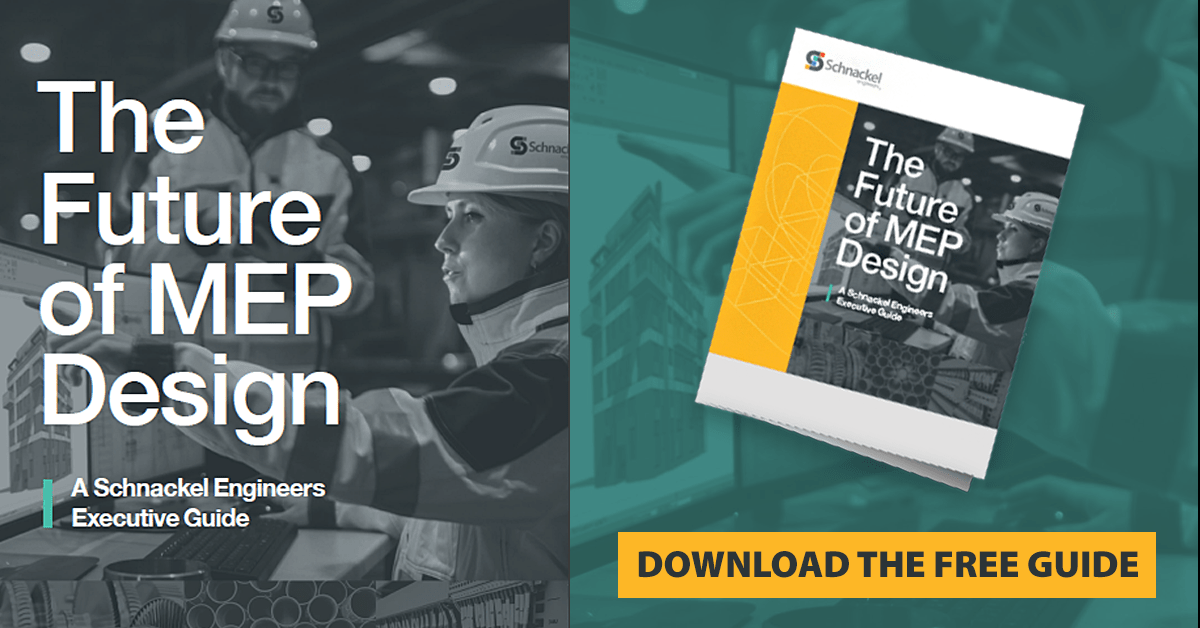The Advantages of AI-Powered MEP Design over Traditional Methods

MEP (Mechanical, Electrical, Plumbing) systems play a crucial role in the functionality and efficiency of any building. These systems account for a significant portion of the total project costs, therefore the design process must be carefully managed to optimize performance, reduce waste, and stay within budget. In recent years, AI-powered MEP design has emerged as a transformative approach to streamlining the design process. In this blog post, we’ll explore the advantages of AI-powered MEP design over traditional methods and why it’s becoming the preferred choice for modern construction projects.
What is AI-Powered MEP Design?
AI-powered MEP design refers to the use of artificial intelligence and advanced computer algorithms to automate and optimize the design of mechanical, electrical, and plumbing systems. AI design tools help engineers generate designs that are more efficient and cost-effective than those produced through traditional, manual methods. In addition, AI-powered MEP designs are incredibly fast, compressing days’ worth of engineering work into minutes, with greater accuracy and fewer errors.
This innovation allows engineers to explore multiple design solutions quickly, minimizing errors and maximizing overall system performance. With this approach, teams can achieve better results faster while meeting the growing demand for sustainability and energy-efficient designs.
Advantages of AI-Powered MEP Design
Increased Design Efficiency
One of the primary benefits of AI-powered MEP design is its ability to speed up the design process. Traditional MEP design methods involve a significant amount of manual work, from drawing or modeling system layouts to calculating and sizing pipes, wires, and ducts. With tools like our AI for MEP® software, these repetitive tasks are fully automated, freeing up engineers to focus on more complex challenges and the parts of the project that really matter to the users – how the spaces actually function. The result is faster project delivery with better quality designs.
These AI tools can quickly analyze multiple design scenarios, providing solutions in a fraction of the time it would take using conventional methods. This speed improves overall project timelines and helps reduce delays, making AI a game-changer for time-sensitive projects.
Enhanced Accuracy
In any MEP design, accuracy is critical. Even small errors in calculations can lead to costly mistakes in the field. AI tools optimize designs with a high degree of precision, reducing the likelihood of human error and ensuring the final design is as accurate as possible. This level of accuracy also minimizes the risk of design conflicts between disciplines, which often occur in traditional methods and can lead to expensive rework during construction.
With AI for MEP’s® ability to simulate different scenarios, engineers can be confident that the design meets all necessary performance standards before construction begins.
Cost Optimization
AI-powered design tools also lead to very significant construction cost savings. By optimizing designs for the minimum material and labor usage, AI for MEP® reduces the initial cost of construction and ensures that construction resources are maximized on every project. Traditional design methods are simply incapable of providing the construction cost optimization of these systems, resulting in inefficiencies and wasted resources, both in terms of materials and economic costs.
In contrast, AI’s ability to explore numerous design alternatives quickly allows engineers to achieve the most cost-effective solution, reducing both initial costs and the risk of costly revisions down the line.
Energy Efficiency and Sustainability
As energy efficiency has become a top priority in building design, AI-powered MEP design helps engineers achieve higher levels of efficiency and sustainability. AI tools study thousands of design alternatives, allowing for the optimization of all systems and infrastructure to reduce energy consumption and improve overall building performance. This capability is especially valuable in meeting modern green building standards like LEED certification.
Traditional design methods, lack the ability to perform such extensive and comprehensive simulations. AI for MEP® provides a clear advantage by ensuring both energy and cost efficient solutions are integrated from the outset.
Limitations of Traditional MEP Design Methods
Traditional MEP design methods, in contrast, present an entirely different set of challenges:
- Time-Consuming: Manual design processes are slow, extending project timelines and delaying project completion.
- Increased Risk of Errors: Traditional methods rely heavily on manual calculations, manual routing and manual sizing increasing the likelihood of human errors that could require costly fixes down the line.
- No Optimization: Unlike AI, traditional methods lack the ability to simulate multiple design alternatives, which results in less efficient solutions. This lack of optimization results in higher construction costs and higher energy costs over the life of the building.
- Higher Costs: With more manual intervention and the potential for errors, traditional methods often lead to higher labor costs, material waste, and unexpected expenses.
While these methods have served the industry well for many years, they are being outpaced by the capabilities of AI-powered tools that offer faster, more accurate, and more cost-effective solutions.
Conclusion
AI-powered MEP design is revolutionizing the construction industry, offering remarkable advantages over traditional methods. From improving efficiency and accuracy to reducing costs and enhancing sustainability, AI is transforming how MEP systems are designed. As the construction landscape becomes increasingly complex and expensive, embracing AI is no longer just an option—it’s a game-changer.
At Schnackel Engineers, we are already leading the charge with AI for MEP®, our proprietary software that is redefining how MEP systems are designed and optimized. With AI for MEP®, we are streamlining the design process, automating time-consuming tasks, and delivering cost-effective, energy-efficient solutions faster than ever before.
Ready to be part of the future of engineering?
Our innovative AI-powered software is here to help you navigate the complexities of modern building design. Contact us today to see how AI for MEP® can help elevate your projects, improve collaboration, and deliver optimal results with unmatched speed and precision.
We’re not just keeping up with the future of engineering—we’re redefining it. Let’s build better, faster, and more efficiently with AI for MEP®.

Comments
Comments are closed.